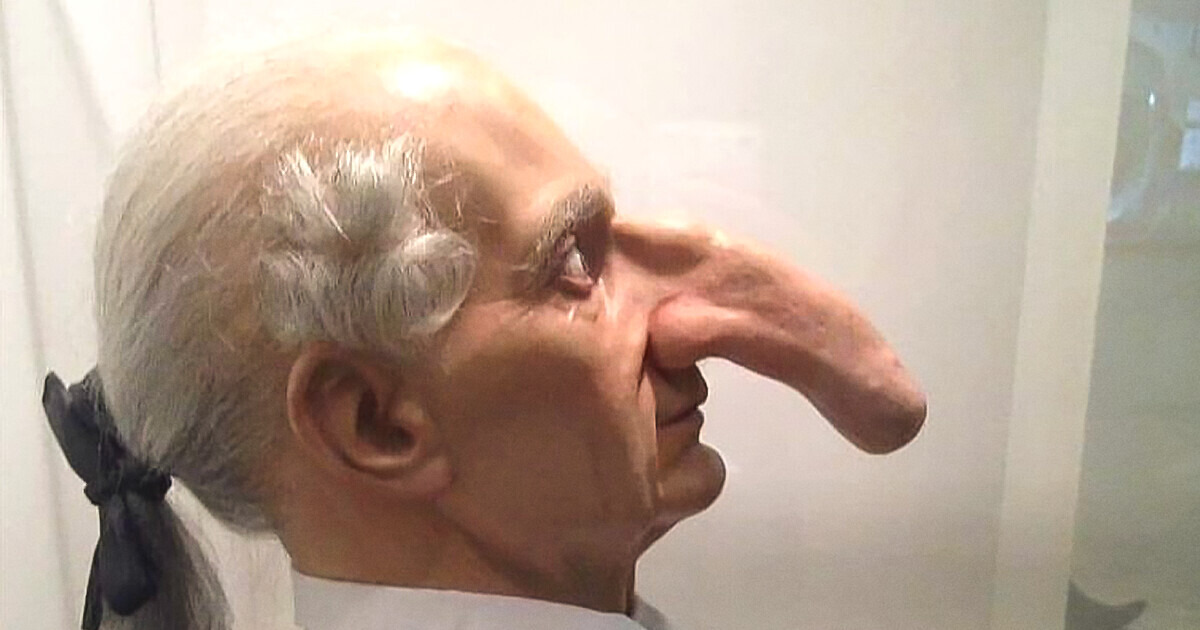My MIL Kept Walking on Me While I Was in the Bathroom and I Found a Creative Solution


During the 18th century, a Yorkshire man captured the attention of his fellow Englishmen not for his ideas or opinions but for the extraordinary size of his nose. Thomas Wadhouse, also known as Thomas Wedders, boasted a nose measuring an astounding 7.5 inches, securing him the title of having the largest nose ever recorded.
Thomas Wedders, born circa 1730, in Yorkshire, England, drew widespread attention everywhere he went, thanks to his distinctive appearance. This peculiarity played a significant role in elevating him to celebrity status, as documented by publications of that era.
Allegedly a participant in a freak show, Wedders frequently became the subject of articles in newspapers and magazines, with some suggesting that he might have had an intellectual disability. The man even found his way into a renowned 19th-century book that explored rare and peculiar medical conditions.
Publications of the time often approached him with irony. The Strand Magazine, in 1896, humorously remarked that if the size of noses was the reason why a person should be important, Wedders would have gained all the money in Threadneedle Street and conquered all of Europe, highlighting the satirical tone with which Wadhouse was portrayed.
Even though he gained fame in the mid-18th century, Wedders left few traces behind. The absence of official records about his life leaves us in the dark about his feelings regarding the size of his nose or whether he indeed pursued a career as a circus performer, among other possibilities. Strand Magazine also stated that either his chin was too weak or his brow too low, Nature exhausted herself in the task of giving him a nose.
The reasons behind Thomas Wadhouse’s decision to exhibit himself remain unclear. Perhaps he believed he couldn’t pass up the opportunity, or maybe others influenced him.
Regardless, Thomas Wadhouse passed away in his 50s around 1780, leaving no record of his life or written testimonies regarding his feelings about his face or the exhibitions he participated in. Unlike sideshow performers in later eras, there are no photographs of Wadhouse, although wax replicas of his face have been showcased in Ripley’s Believe It Or Not.
Another enigma surrounds the origins of his long nose, which captivated the curiosity of the British population. Some researchers believe that the anomaly may stem from an unidentified illness that also affected his cognitive development during his early years.
Additionally, there is a rumor suggesting that the artist might have been born as a result of a fraternal relationship, a genetic combination that some records suggest could be responsible for the facial deformity.
When a photo of his wax figure was shared on Reddit, it immediately became viral. And the reactions vary from shock to jokes. User HoodFellaz said, “They say your brain automatically ignores looking at your own nose, but yeah, I don’t know about that guy.” At the same time, others noted that he looked like Squidward from Sponge Bob or even as a human-sized ant-eater.
Guinness World Records recognizes Wadhouse as the historical record holder for the longest nose, with his impressive 7.5-inch size. The current titleholder, Mehmet Özyürek of Artvin, Turkey, boasts a nose measuring 3.46 inches.
The intriguing tale of Thomas Wadhouse, the man with the world’s largest recorded nose, remains filled with mystery and speculation. Despite achieving fame in the 18th century, his life is marked by vague historical documentation, leaving us with mere fragments of his story. The causes behind his remarkable nasal feature continue to be a subject of debate.
Wadhouse’s legacy endures as a testament to the fascination with the extraordinary and the enduring human curiosity that persists across generations. Though the details of his life may elude us, his monumental nose remains an indelible mark on the pages of history.











